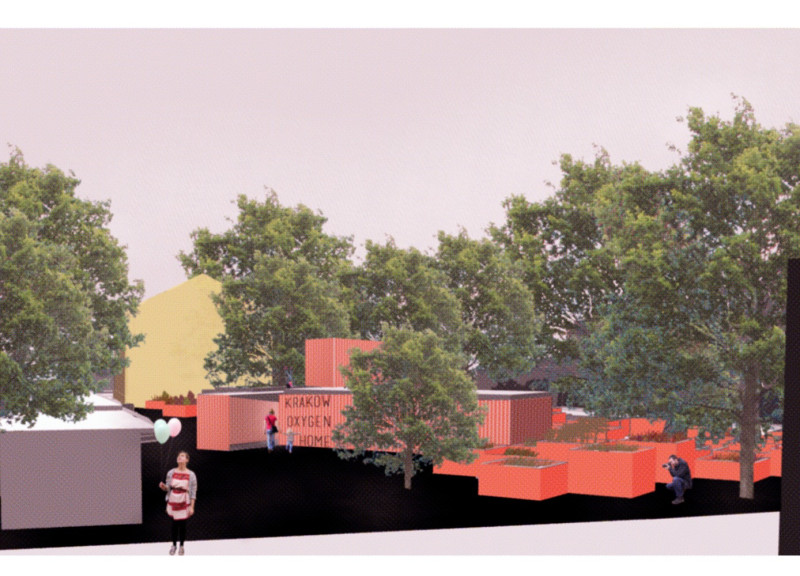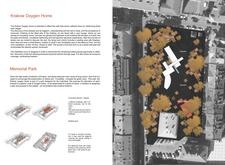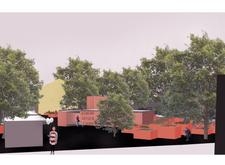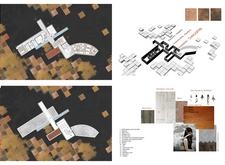5 key facts about this project
At first glance, the project reveals a harmonious relationship with its site, leveraging natural topography and existing vegetation to create spaces that feel both open and intimate. The building’s orientation maximizes natural light, reducing reliance on artificial lighting and promoting energy efficiency. The use of large windows and strategically placed outdoor spaces fosters a connection with nature, inviting the landscape into the interior. This thoughtful integration not only enhances occupant well-being but also extends the usable space of the project, blurring the lines between indoor and outdoor living.
Delving into the materiality of the project, various sustainable materials have been utilized that contribute to both its environmental performance and visual appeal. The architectural design incorporates locally sourced stone, which not only serves to ground the structure in its geographic context but also adds a layer of durability. Timber is utilized to create warmth and texture, making it a key element in interior spaces that prioritize comfort and wellness. Additionally, the incorporation of glass provides transparency and openness, while also allowing for views that celebrate the surrounding landscape. The careful selection of materials showcases the commitment to sustainability and resourcefulness, reinforcing the project’s ethos.
Attention to detail is evident throughout the design, as elements such as overhangs and shading devices are thoughtfully integrated to minimize solar gain and enhance energy efficiency. These design features not only serve practical purposes but also contribute to the architectural language of the project, creating a unique character that enhances its aesthetic value. The choice of colors and finishes has been made to resonate with the environment, establishing a calming palette that evokes a sense of peace and tranquility.
Moreover, the spatial organization of the interior reflects a deep understanding of user experience. Different zones within the project are defined with functions in mind, allowing for both communal and private spaces that cater to various activities and needs. This flexibility is a hallmark of modern architectural design, where the ability to adapt to the changing dynamics of use is crucial. The layout promotes social interaction while ensuring areas for solitude, striking a balance that is vital in today’s fast-paced world.
Unique design approaches, such as the integration of green technologies and adaptive reuse principles, highlight the project’s forward-thinking ethos. The incorporation of renewable energy systems, like solar panels or green roofs, exemplifies a commitment to sustainability that extends beyond mere compliance with standards. Instead, it reflects an ambition to set an example for how architecture can positively impact both the environment and the community. The adaptive reuse of existing structures, when applicable, demonstrates an understanding of the value of heritage and the need to maintain continuity in the built environment.
The project serves not only as a dwelling or a commercial space but as a community focal point, encouraging interaction and engagement among its users. It stands as an example of how thoughtful architectural design can enhance the quality of life and foster a sense of belonging within a community. Each aspect, from the choice of materials to the spatial organization, reflects a commitment to creating an enriching environment that resonates with its users.
For those interested in understanding the depth of this architectural project, further exploration of its architectural plans, architectural sections, and architectural designs will offer additional insights into the careful consideration that has shaped its development. These elements serve as valuable resources for anyone looking to appreciate the complexities and thoughtfulness behind modern architectural ideas. Engaging with the project’s presentation will undoubtedly reveal the intricate details that underscore its design philosophy and intended impact on its environment.


























